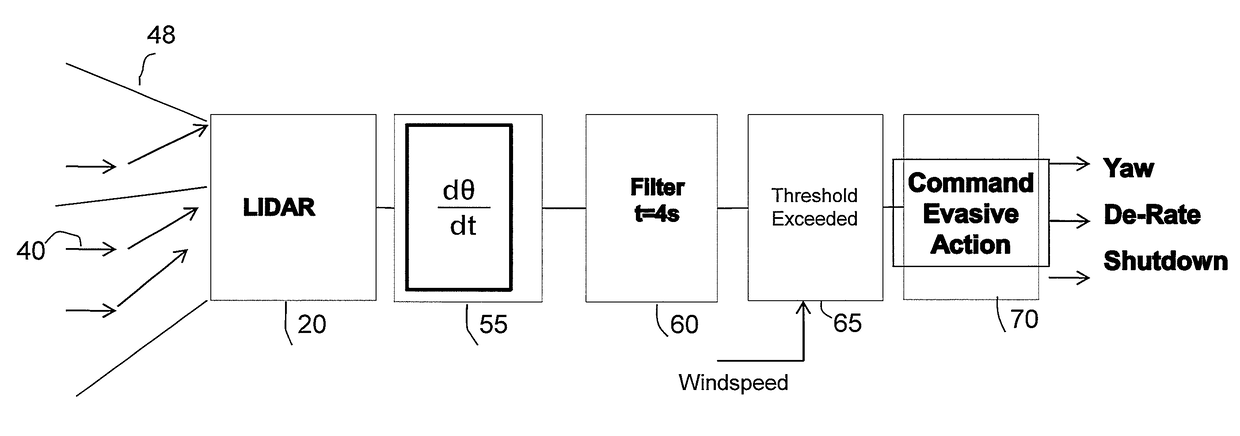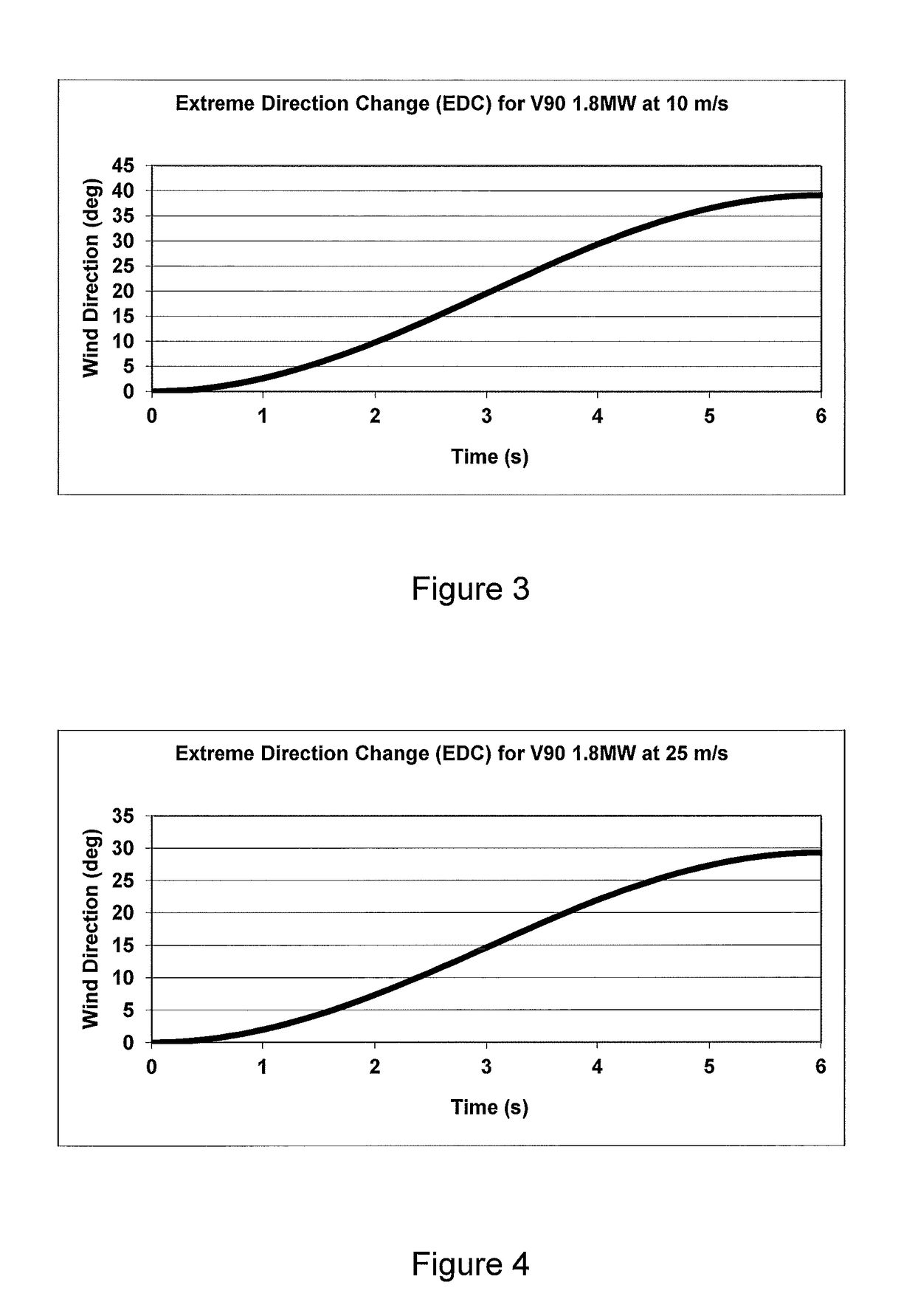Method and apparatus for protecting wind turbines from extreme events
a technology for wind turbines and extreme events, applied in the field of wind turbines, can solve the problems of reducing the overall lifetime of turbine components, such as the blades or the gearbox, by a significant amount, and unbalanced loads
- Summary
- Abstract
- Description
- Claims
- Application Information
AI Technical Summary
Benefits of technology
Problems solved by technology
Method used
Image
Examples
Embodiment Construction
[0027]International Standard IEC 61400-1 3rd Edition, sets out design requirements for wind turbines. Chapter 6.3.2 referred to above sets out and defines extreme wind conditions including wind sheer events, peak wind speeds due to storms and rapid changes in wind speed and direction. The magnitude of an extreme direction change is given by:
[0028]θe=±4arctan(σ1Vhub(1+0.1(DΛ1)))
where θe is the extreme direction change magnitude
σ1is given by σ1=Iref (0.75Vhub+b); b=5.6 m / s
[0029]Iref is the expected value of hub-height turbulence intensity at a 10 min average wind speed of 15 m / s
[0030]Vhub is the wind speed at hub height
[0031]D is the rotor diameter
[0032]Λ1istheturbulencescaleparameter,accordingtoΛ1={0.7zz≤60m42mz≥60m
[0033]The extreme direction change transient, θ(t), shall be given by
[0034]θ(t)={0°fort0±0.5θe(1-cos(πt / T))for0≤t≤Tθefort>T
where T=6 s is the duration of the extreme direction change. The sign shall be chosen so that the w...
PUM
 Login to View More
Login to View More Abstract
Description
Claims
Application Information
 Login to View More
Login to View More - R&D
- Intellectual Property
- Life Sciences
- Materials
- Tech Scout
- Unparalleled Data Quality
- Higher Quality Content
- 60% Fewer Hallucinations
Browse by: Latest US Patents, China's latest patents, Technical Efficacy Thesaurus, Application Domain, Technology Topic, Popular Technical Reports.
© 2025 PatSnap. All rights reserved.Legal|Privacy policy|Modern Slavery Act Transparency Statement|Sitemap|About US| Contact US: help@patsnap.com



